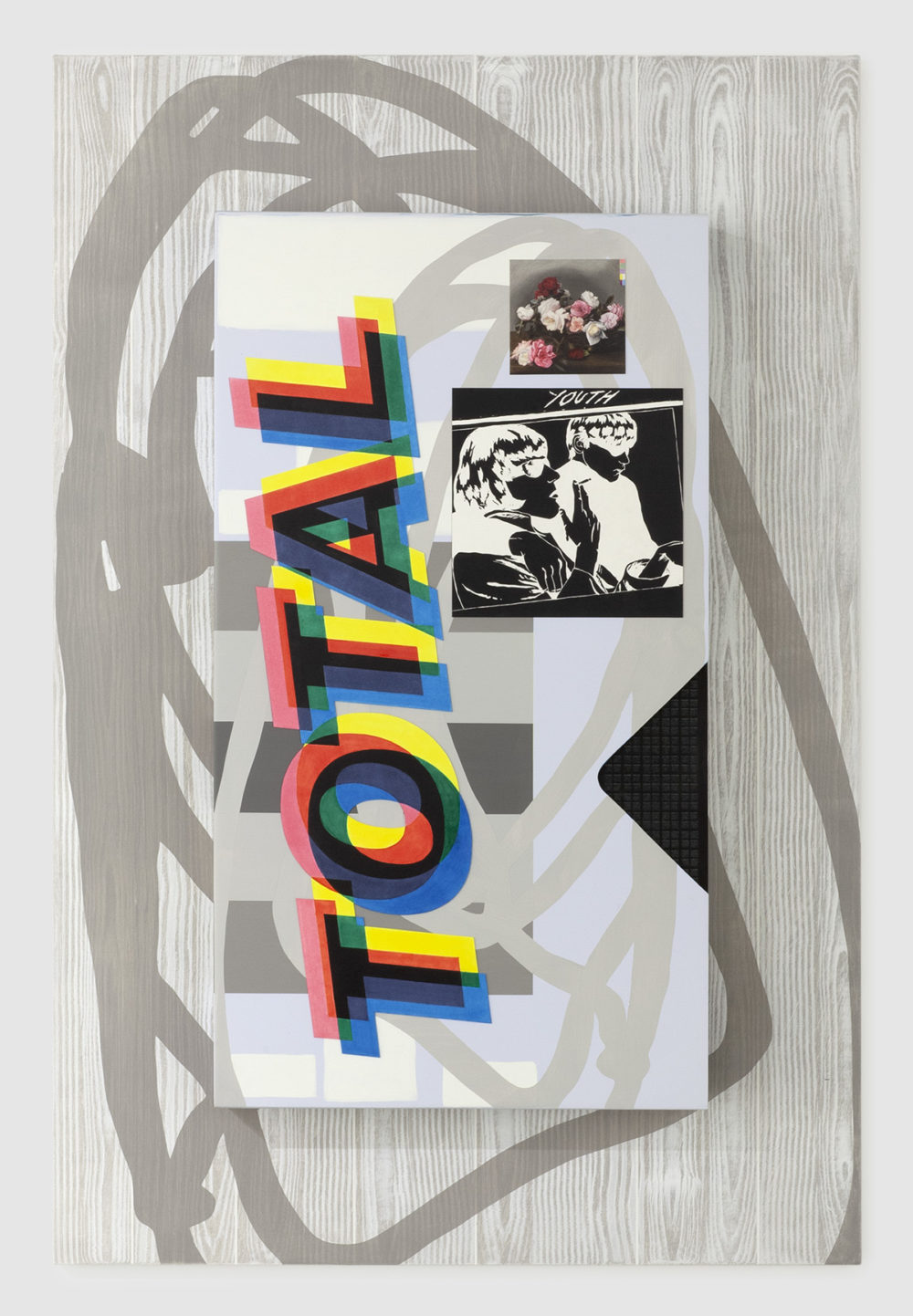
- Source: ARTFORUM
- Author: GLEN HELFAND
- Date: June 08, 2019
- Format: PRINT AND DIGITAL
Review: Willie Stewart
In Between Days at Morán Morán
Willie Stewart was two years old when the Cure’s “In Between Days” was released. The song is an earworm that can get you to dance to dour lyrics: “Yesterday I got so old, I felt like I could die.” Stewart took this former nightclub staple as the title of his recent solo exhibition, which, like the band’s music, was austere, showy, and well-crafted, more thoughtful than its slick finishes suggested.
Stewart, who is also a musician, used the arena of arty punk and synth bands from the 1980s to explore layered notions of time, in an era when any decade’s records are instantly streamable. A sense of nostalgia surrounded bygone bands (Joy Division and New Order figured prominently) and media formats—most of the works featured oversize VHS cassettes in sleeves that had been constructed from combinations of photographic prints, painted elements, and drawings, all mounted on large panels. These handsome, Pop-inflected assemblages were the equivalents of mixtapes in an expanded field, deploying art and music to seduce the viewer with their silent objecthood.

Willie Stewart, TOTAL Youth, 2019, ink and color pencil on cotton board, pigmented ink-jet print
and acrylic on polystyrene board, and acrylic on canvas over panel, 60.25 × 40 × 8 inches.
The VHS sleeves were adorned with handpainted brand names (Polaroid, a fitting reference to immediacy and to fugitive materials, appeared more than once) and alluded to iconic album covers, which were here rendered as if decorative stickers. TOTAL youth, 2019, featured a small painting of New Order’s 1983 Power, Corruption & Lies LP, with its, pale-pink still life borrowed from A Basket of Roses, Henri Fantin-Latour’s 1980 nature morte; this was accompanied by a version, in negative, of Raymond Pettibon’s cover for Sonic Youth’s Goo (1990). Another work included a depiction of Gerhard Richter’s moody Drei Kerzen (Three Candles), 1982, from the same body of work as the painting that adorned Sonic Youth’s 1988 Daydream Nation. These references all point to an almost funerary notion of time and obsolescence, countered only by the bright fonts, floral motifs, and bold patterns of some of the surrounding imagery. Stewart carefully revels in these layers of citation and circulation. In A Brief History of, 2019, three album covers are presented on top of each other in decreasing sizes, echoing Josef Albers’s color studies. The smallest, for New Order’s 1981 debut Movement, is stark and graphic, and covers the faces on the instantly recognizable orange background of Nancy & Lee, from 1968, which in turn obscures all but the black-and-white edges of X’s classic Los Angeles (1980). The playlist, though spanning more than a decade of influences and styles, isn’t entirely novel—it speaks to a certain taste profile, perhaps one assembled by Spotify, and communicates most directly to those who might be invited to the same dance party.
Stewart continued to use layered visuals in a nine-minute video, Love Song, 2019, also named after a single by the Cure. With a lush, rainy sound-track, meta subtitles (quotes from Albers and New Order, such as THIS IS AN IMAGE. or THIS IS A FRAME.), and costuming and colored lighting à la Mike Kelley, the video follows a female figure who appears in various theatrical guises: in clown makeup as she plays guitar, faux aged as she puts together a puzzle of a Thomas Kinkade-esque painting of a cottage. These scenes nearly fill the screen, but thin strips of other moving images around the central action reveal there is more going on underneath. Stewart is clearly interested in obfuscation and obscurity, even as he remains under the influence of fandom and forebears.
That mixture of the accessible and esoteric, popular and fine art, had an alluring effect, not unlike that of a cover song whose sense of familiarity is warped by interpretative flourishes and new contexts. With his cover of covers, Stewart was attempting to shape his own genre—thoughtful, downbeat Pop.

